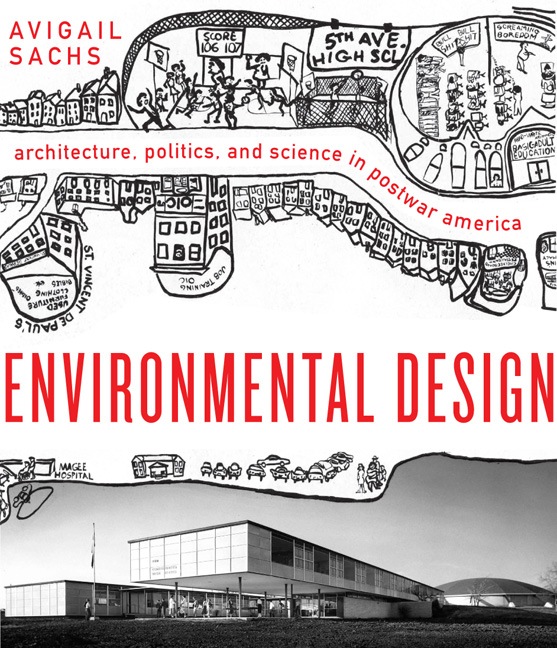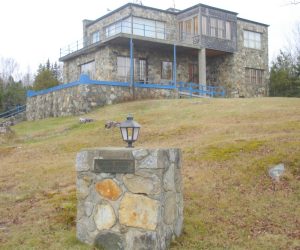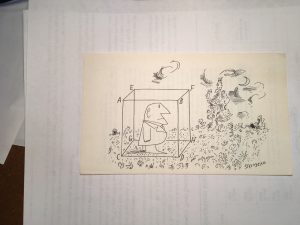Avigail Sachs
University of Virginia Press

A couple of decades ago architects couldn’t care less about environmental design. Instead starchitects pushed their architectural expression toward the sculptural. It was a break with a modernist commitment of bringing art and science together in design, which also entailed a break with the environmental sciences. As I have shown in my own work, modernist design in the Bauhaus tradition was all about merging art and science in order to create a better social culture.1 Many architects of the 1990s also rejected another modernist heritage, namely the idea that design somehow should serve for the betterment of society. Instead they resorted to architecture for architecture’s sake and with that to a sort of cynicism that allowed them to design a propaganda television tower for the Chinese government, to take pride in being architects for Saudi dictators, to shore up the reputations of Russian and Azerbaijan oligarchs, and to ignore slave-labor conditions on building sites in Qatar. More generally, well-known architects would create magnificent decadent buildings along with a mindless destruction of nature that supported their existence.
In view of all this it is refreshing to read Avigail Sachs’s account of architectural debates and projects reaching back to the postwar era in the United States. It is a timely book, as the architectural field today is struggling with how to respond to issues such as climatic change, species depletion, ecological destruction, immigration, and social injustice. The sculptural gymnastics of the 1990s is out, as designers now once again are trying to unify art and science in order to find solutions to environmental and social ills.
Sachs starts her account by reviewing the work of Catherine Bauer (1905–1964), an inspirational beginning given the fact that architectural history all too often focuses on male thinkers and designers. Bauer, it is worth recalling, was a passionate advocate of housing for the poor during the Great Depression, and the prime author of the important Housing Act of 1937 that would set the standard for the New Deal housing program, standards that would last well into the 1960s. Sachs shows us that her ideas for housing were intrinsically linked with a broad notion of environmental design, understood as proper housing and city planning, including access to light, fresh air, and a healthy landscape. Environmental design thus understood can perhaps be compared to what today would fall under the rubric of designing for environmental justice.
Among the proponents of environmental design there was a commitment to learn from the sciences, specifically from the natural sciences such as ecology, but also from sociology and psychology. Richard Neutra’s environmental design, Sachs shows us, was deeply committed to both. As we have learned from Sylvia Lavin’s important book Form Follows Libido (2004), Neutra’s famous homes were inspired by psychoanalytic sciences, including that of the biologist Wilhelm Reich.2 Sachs draws on Lavin’s argument, but places Neutra’s Survival through Design (1954) in a broader exploration of the relevance of environmental and social sciences to architecture.3

Neutra tried to create architecture to address both human physical and emotional needs, an aspiration that harbors back to Bauhaus ideas of designing for the full human being. Environmental design thus understood must cater to how we hear, see, breath, smell, taste, feel, and move. When key Bauhauslers moved to the Graduate School of Design at Harvard University, environmental design for the full human being became a way of both designing and teaching. Walter Gropius, for example, lectured passionately to his students about the importance of protecting the natural environment for human wellbeing: “The greatest responsibility of the planner and architect, I believe, is the protection and development of our habitat. Man has evolved a mutual relationship with nature on earth, but his power to change its surface has grown so tremendously that this may become a curse instead of a blessing. . . . Until we love and respect the land almost religiously, its fatal deterioration will go on.”4 In his audience sat Ian McHarg, who later wrote Design with Nature (1969), a book that arguably was the most important postwar book in landscape design.5
Surprisingly, the importance of Gropius for environmental design is hardly part of Sachs’s analysis. Instead she zooms in on the work on Serge Chermayeff and Christopher Alexander, whose book Community and Privacy (1963) opened new doors by using computers to understand social and natural ecologies.6 The computer became an important tool in providing a unifying mathematical language for their comprehensive environmental research design program. Under the heading of Environmental Design, Chermayeff taught Harvard’s first year students an environmentally friendly, comprehensive, and interdisciplinary foundation course. And in the mid-1950s Chermayeff began advocating moving Environmental Design beyond just first year students to an Advanced Studies Program with PhD students. This was approved by the school’s faculty in 1958. Alexander was his first graduate student, and their book project became a shared vision for how to go about addressing social and environmental ills.

During the 1960s the term environmental design became increasingly common as a way of framing course material as well as measuring the quality of architectural projects. Sachs discusses the various ways in which environmental design became a profession and field at key design schools, sometimes at the expense of other, perhaps more radical or politically loaded, approaches to design. She does an excellent job in discussing the various ways in which such design was realized at different universities and classrooms, as well as in built structures in natural and urban settings. In discussing the emergence of an architectural counterculture of the 1970s, she shows that this social movement represented more of a continuation than a break with the past, an insight that may come as a surprise for readers old enough to have experienced the events.
Though well-researched, Sachs’s book is not an easy read and younger students would probably find it hard to grapple with. The many interesting nuances and rich source material makes her study a fine contribution to architectural history. It is an important and interesting book that is well worth the read.
Endnotes
Peder Anker is an Associate Professor at the Gallatin School of Individualized Study New York University. His teaching and research interests lie in the history of science, ecology, environmentalism and design, as well as environmental philosophy. With Louise Harpman and Mitchell Joachim, Professor Anker is the co-author of Global Design: Elsewhere Envisioned (Prestel, 2014), a showcase of design research as it relates to visionary architecture, landscape architecture, urbanism, and ecological planning. He is the author of From Bauhaus to Ecohouse: A History of Ecological Design (Louisiana State University Press, 2010), which explores the intersection of architecture and ecological science, and Imperial Ecology: Environmental Order of the British Empire, 1895-1945 (Harvard University Press, 2001).
How to Cite This: Anker, Peder. Review of Environmental Design: Architecture, Politics, and Science in Postwar America, by Avigail Sachs. JAE Online. November 8, 2019. http://www.jaeonline.org/articles/review/environmental-design#/.






